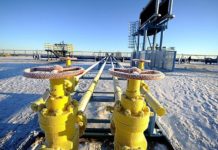The cost of building four Rosatom hazardous waste processing plants has more than tripled, reaching 48 billion rubles.
The reasons, according to the Ministry of Natural Resources and Rosatom, include a decrease in the percentage of waste incineration and an increase in processing volumes, an increase in environmental requirements, and an increase in metal prices, Kommersant writes.
The total deficit in construction funds is estimated to be 29 billion rubles, the lion’s share of which will almost likely have to come from the budget. Rosatom will produce some of the funds on its own.
Analysts, on the other hand, believe that prices are increasing as a result of the monopolization of the hazardous waste disposal industry.
According to the Ministry of Natural Resources, the total cost of constructing Rosatom’s hazardous waste processing companies has increased to 47.89 billion rubles. This price was determined using the results of the Glavgosexpertiza on March 17.
The previously approved amount for facility development financing was 18.85 billion rubles, with about 15.6 billion rubles coming from federal budget sources.
The Ministry of Natural Resources estimates that the budget gap for four items will be 29.04 billion rubles.
Rosatom, which was authorized in 2019 as a single operator for the disposal of the most hazardous waste of the first and second classes, is building processing complexes on the sites of former chemical weapons destruction facilities. The Shchuchye complex is in Kurgan, Gorny is in Saratov, Maradykovsky is in Kirov, and Kambarka is in Udmurtia.
Each can handle up to 50 million tons of garbage each year. The project is scheduled to be finished in 2023. Waste from the metallurgical and machine-building industries (aqueous solutions including slags and heavy metals), as well as mercury lamps and thermometers, will be recycled at the complexes.
“The cost increase was influenced by the fact that the complexes will use more waste treatment methods, which allow for the recovery of secondary raw materials while reducing the quantity of garbage burnt.” Furthermore, according to the Ministry of Natural Resources, metal prices would rise by 30-65 percent in 2020, according to Kommersant.












